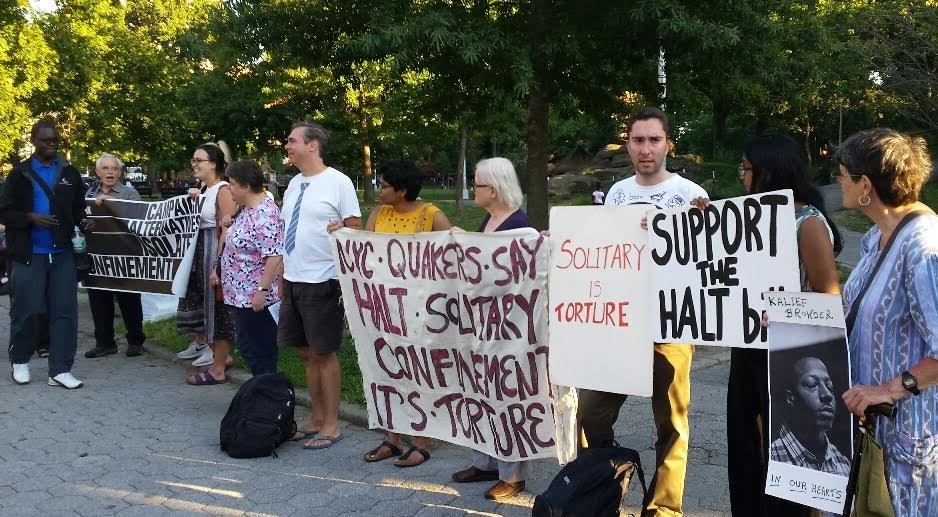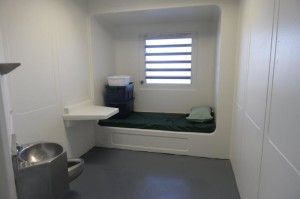By Dartunorro Clark. Reprinted from dnainfo.com.

HARLEM — Victor Pate gave up and started talking to himself.
Pate, 64, did a three-month stint in solitary confinement for 23 hours a day during the late 1980s when he was imprisoned in Sing Sing.
Pate, a Harlem resident, said the loss of human contact during that time drove him to it.
“That short period of time I was isolated put me in a state of mind I’ve never been before,” he said. “I found myself hallucinating, sort of like I was in a surreal world.”
Pate, along with a dozen other advocates rallied and had people sign petitions Tuesday in Marcus Garvey Park to raise awareness about solitary confinement and called on Gov. Andrew Cuomo to reform the practice in the state.
The Campaign for Alternatives to Isolated Confinement (CAIC) organized the rally and uses it’s 4,000-member network to host similar rallies across the state.
The organizers also used virtual reality goggles to take passersby into a solitary 6-by-9 feet cell. The goggles displayed a gloomy room with a sliver of light coming into the cell from a tiny window, along with a twin-sized mattress, a toilet, sink and a makeshift desk.
“No one should be placed in a situation where they are cut off from human contact,” Pate said. “It creates a whole different person.”
A bill, the Humane Alternatives to Long Term (HALT) Solitary Confinement Act, proposed to reform the practice was stalled during the 2015-2016 legislative session, advocates said.
The bill would shorten the time a prisoner can be in solitary to 15 days. The United Nations said in a recent report that any time beyond 15 days could be considered torture. It would also provide rehabilitation and counseling services.
The bill has yet to come to a vote in either the state Senate or the Assembly.
Advocates are hoping the bill gets a vote and passes, but also stressed that Cuomo could use executive authority to halt the practice at state prisons.
“We’re going to keep doing this until we get the bill passed and signed by the governor,” said Jared Chausow, one of the organizers.
The governor’s office did not immediately respond to a request for comment.

Follow the #HALTsolitary Campaign